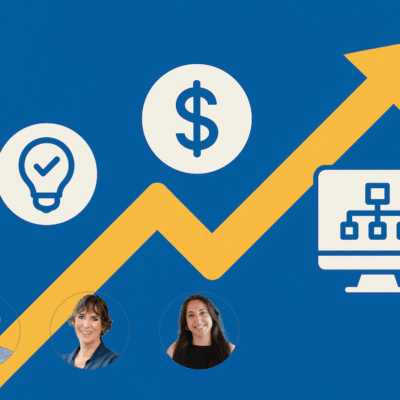Beyond the discount: Building sustainable growth through data-driven loyalty
In today’s hyper-competitive retail landscape, the path to sustainable growth hinges on a critical question: How do you keep customers coming back?
While discounting remains the go-to acquisition tool, the data tells a compelling story – loyalty programme members generate 12-18 percent more revenue than non-members, and just a five percent increase in customer retention can boost profits by 25-95 percent. Yet many retailers continue relying on price promotions that erode margins and commoditise their brands.
The fundamental difference
Discount-driven and loyalty-driven strategies operate on entirely different psychology. Discounts reduce friction at a single purchase point, asking customers “How much can I save today?” Loyalty programmes, by contrast, create ongoing relationships where customers ask “What am I building towards?” This future orientation creates brand investment beyond the products themselves.
The behavioural data is striking. 43 percent of consumers make weekly purchases due to loyalty programmes, demonstrating how structured rewards drive habitual behaviour. Strategic programmes can drive dramatic basket size increases, with properly integrated implementations seeing up to 319% increases in average order quantity. Meanwhile, frequent discounting trains customers to delay purchases, creating revenue volatility and margin pressure.
The Australia and New Zealand context
Our region represents a sophisticated loyalty market. Almost 80 percent of Australians belong to at least one loyalty scheme, yet only around 50 percent actively use their memberships. This saturation means differentiation requires exceptional execution, not just programme existence.
What drives loyalty here? The leading factor is that brands offer good products and services – around 63 percent of Australian respondents cite this. Brand connection trumps price, with 83 percent of Australian consumers loyal to preferred retailers based on brand relationship. The crucial insight: loyalty programmes amplify existing brand strengths but cannot compensate for poor products or service.
Regional preferences favour tangible, monetary rewards – regular discounts, cashback, and the ability to pay with points. Mobile accessibility and immediate value remain critical success factors. Following the closure of Flybuys and SmartFuel, retailers are reviewing their loyalty strategies, considering programmes where they can manage their own customer experiences for better outcomes, revenues and margins at lower cost than large-scale coalitions provided.
Service quality matters enormously here. Over 53.5 percent of Australian respondents say bad customer service would lose their loyalty – more than decreased product quality (50.6 percent). This reinforces that loyalty programmes must operate within an ecosystem of excellent service delivery.
The data advantage
The most significant advantage of digital loyalty programmes isn’t the rewards – it’s the data infrastructure they create. Traditional discount strategies offer limited insight: you know a promotion drove sales, but rarely which customers were new versus existing, whether they would have purchased anyway, or what they’ll do next month.
Platform-based loyalty programmes create comprehensive customer profiles revealing purchase patterns, engagement levels, lifetime value trajectory, and churn indicators. This enables personalisation that generic discounting cannot match. Rather than blasting the same 20 percent off to everyone, you can reward high-value customers with exclusive benefits, re-engage dormant members with targeted incentives, and prevent churn by intervening with at-risk customers before they leave.
88 percent of loyalty programme owners believe micro-targeting positively impacts customer retention and satisfaction. This data-driven approach transforms marketing from guesswork into science, enabling more accurate revenue forecasting, optimised inventory management, and efficient marketing budget allocation.
The platform imperative
Manual or spreadsheet-based loyalty tracking quickly becomes unsustainable. Purpose-built platforms provide critical advantages: automation and scalability, real-time data processing, advanced analytics, security and compliance management, and integration with e-commerce systems, POS terminals, and marketing tools.
While building custom infrastructure might seem appealing, the hidden costs – development investment, maintenance burden, opportunity cost, and missing expertise – usually outweigh benefits. Platform solutions allow you to launch sophisticated programmes quickly, iterate based on results, and benefit from continuous enhancements without additional development costs.
Strategic implementation
The most effective retention strategies don’t abandon discounts but deploy them strategically within a loyalty framework:
- Acquisition Phase: Use discounts to lower barriers for first-time customers, but immediately enrol them in your loyalty programme
- Retention Phase: Reserve most promotional offers for loyalty members, making programme enrolment the gateway to best deals
- Reactivation Phase: Use targeted discounts to re-engage inactive members based on their purchase patterns
- VIP Recognition: Provide tier-based discounts that reward loyalty whilst maintaining full-price positioning for non-members
The path forward
The retail industry’s trajectory is clear: as customer acquisition costs rise and markets saturate, retention economics become increasingly critical. With 20 percent of current customers projected to comprise 80 percent of future revenue, investing in loyalty infrastructure isn’t optional – it’s essential for sustainable growth.
The businesses thriving today use discounts strategically for acquisition whilst building data-driven loyalty programmes that create defensible competitive advantages. They measure performance rigorously, view loyalty as strategic infrastructure rather than marketing expense, and partner with platform providers bringing expertise, scalability, and continuous innovation.
The question is no longer whether loyalty programmes deliver better long-term value than discounting. The question is whether your loyalty infrastructure is sophisticated enough to capture that value before your competitors do.
Tranxactor’s data-driven loyalty processing platform enables retailers to launch sophisticated customer retention programmes that drive measurable business results. With seamless integration, sku-level shopping basket tracking, powerful reward points engine, tiering, targeted digital eVouchers, analytics, and flexible reward structures, we can help you transition from discount dependency to loyalty-driven growth.
Download the complete white paper from the Tranxactor website, www.tranxactor.com.







